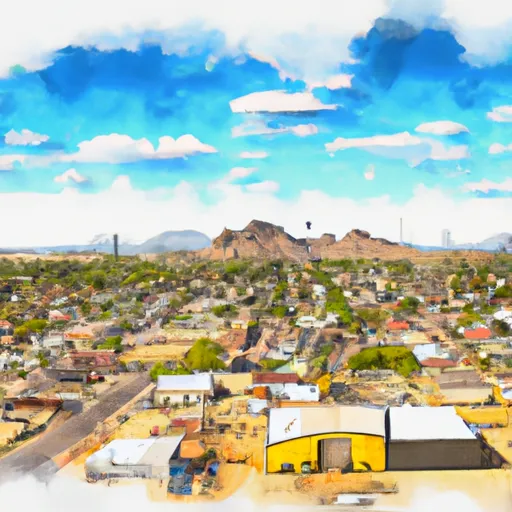-
 Snoflo Premium
Snoflo Premium
Get unlimited access to all our content
With no Ad interruptions! - Start Your Free Trial Login with existing account
Lukachukai
Eden Index
Climate
8.8
•
Recreation
1.8
•
Community
•
Safeguard
4.1/10

Lukachukai is a small community located in Apache County, Arizona, encompassed by the beautiful Navajo Nation. The climate in Lukachukai is characterized by hot summers and cold winters. Summers can reach temperatures over 90°F, while winters can drop below freezing, with occasional snowfall. The area experiences a semi-arid climate, with low precipitation throughout the year.
In terms of hydrology constituents, Lukachukai is surrounded by stunning natural landscapes, including canyons and mesas. The region is home to several small streams and rivers, such as the Lukachukai Wash. These waterways are vital for the local vegetation and wildlife, providing a source of nourishment in the arid environment.
Outdoor recreation opportunities in Lukachukai are abundant. The area offers excellent hiking trails, allowing visitors to explore the striking canyons and admire the unique rock formations. There are also opportunities for camping, fishing, and birdwatching. Wildlife enthusiasts can spot various species, including mule deer, bobcats, and a variety of bird species. Lukachukai provides a serene and picturesque setting for those seeking to immerse themselves in nature and experience the beauty of Arizona's high desert landscape.
What is the Eden Index?
The Snoflo Eden Index serves as a comprehensive rating system for regions, evaluating their desirability through a holistic assessment of climate health, outdoor recreation opportunities, and natural disaster risk, acknowledging the profound impact of these factors on livability and well-being.
Climate Health Indicator (CHI): 8.8
Lukachukai receives approximately
219mm of rain per year,
with humidity levels near 64%
and air temperatures averaging around
12°C.
Lukachukai has a plant hardyness factor of
6, meaning
plants and agriculture in this region thrive during a short period during spring and early summer. Most
plants will die off during the colder winter months.
By considering the ideal temperature range, reliable water supplies, clean air, and stable seasonal rain or snowpacks, the Climate Health Indicator (CHI) underscores the significance of a healthy climate as the foundation for quality living.
A healthy climate is paramount for ensuring a high quality of life and livability in a region, fostering both physical well-being and environmental harmony. This can be characterized by ideal temperatures, reliable access to water supplies, clean air, and consistent seasonal rain or snowpacks.
Weather Forecast
Streamflow Conditions
Lower San Juan
Area Rivers
Lower San Juan
Snowpack Depths
Lower San Juan
Reservoir Storage Capacity
Lower San Juan
Groundwater Levels
Recreational Opportunity Index (ROI): 1.8
The Recreational Opportunity Index (ROI) recognizes the value of outdoor recreational options, such as parks, hiking trails, camping sites, and fishing spots, while acknowledging that climate plays a pivotal role in ensuring the comfort and consistency of these experiences.
Access to outdoor recreational opportunities, encompassing activities such as parks, hiking, camping, and fishing, is crucial for overall well-being, and the climate plays a pivotal role in enabling and enhancing these experiences, ensuring that individuals can engage in nature-based activities comfortably and consistently.
Camping Areas
| Campground | Campsites | Reservations | Toilets | Showers | Elevation |
|---|---|---|---|---|---|
| Wheatfields Lake | 25 | 7,316 ft |
Catastrophe Safeguard Index (CSI):
The Catastrophe Safeguard Index (CSI) recognizes that natural disaster risk, encompassing floods, fires, hurricanes, and tornadoes, can drastically affect safety and the overall appeal of an area.
The level of natural disaster risk in a region significantly affects safety and the overall livability, with climate change amplifying these risks by potentially increasing the frequency and intensity of events like floods, fires, hurricanes, and tornadoes, thereby posing substantial challenges to community resilience and well-being.
Community Resilience Indicator (CRI):
The Community Resilience Indicator (CRI) recognizes that education, healthcare, and socioeconomics are crucial to the well-being of a region. The CRI acknowledges the profound impact of these elements on residents' overall quality of life. By evaluating educational resources, healthcare accessibility, and economic inclusivity, the index captures the essential aspects that contribute to a thriving community, fostering resident satisfaction, equity, and social cohesion.

